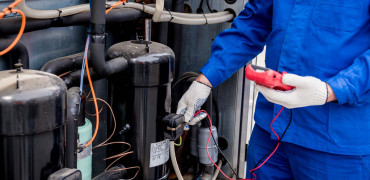As building owners and managers face a growing matrix of challenges in operating buildings today, they are turning to automation and controls to help them understand building performance and manage it.
According to research from BSRIA, offices are the biggest market for controls at 50% by value.
But facilities managers (FMs) of hotels, education, health and retail buildings are also looking to building management systems (BMS) to get to grips with issues such as changing occupancy patterns, shifts in usage and pressures on energy costs.
Our remote monitoring services help clients achieve high maintenance levels in an increasingly challenging environment
The internet of things
One of the drivers behind this growth has been the ability to connect equipment in a building to the internet.
Today, almost all types of equipment offer internet connectivity - from smart valves to room sensors and chillers. These devices can collect data and respond to commands from simple ‘on/off’ signals to running complex operations.
This ‘internet of things’ gives building and facilities managers access to data to develop real-time models of how a building is functioning.
This capability is even more critical in the 2020s as we undergo significant changes in how our buildings are occupied and used.
For example, the old nine-to-five office occupancy patterns are shifting as more organisations adopt hybrid working, which has implications for building operation and maintenance.
Similarly, hotels are offering drop-in workspaces or offices by the day as a ‘third space’ for home workers, thereby extending the hours of operation for heating and cooling systems.
Service and maintenance programmes are also being impacted by building control and automation technology advances.
In May 2022, Facilitate magazine stated: “Office buildings of 2030 will be mostly maintained by tech.”
It looks to a future where FMs can access digital twins of their buildings to accurately predict the performance of heating and cooling systems – even simulating upgrades to calculate energy savings.
How we embrace connected technology
Here at Mitsubishi Electric Service and Maintenance, we believe that technology can be harnessed to support and improve maintenance programmes and make them easier to deliver and less disruptive for occupants.
Our remote monitoring services help clients achieve high maintenance levels in an increasingly challenging environment.
Remote monitoring provides our Service and Maintenance team with 24-hour access to information on how building services are operating.
At the first sign of a problem, perhaps even before it’s noticed on-site, action can be taken. In some cases, system corrections can be made remotely.
However, if an on-site visit is required, the service engineer will understand the problem before they arrive – resulting in a much faster resolution of the issue.
The optimal approach
This approach to service and maintenance isn’t just about preventing problems; it can also help to optimise the energy performance of equipment such as chillers.
It’s possible, for example, to track performance over time or to compare systems across a portfolio. This can help highlight trends in energy use, for example, supporting business sustainability goals.
The application of technology means that service and maintenance can become more effective and support the efficient operation of buildings.
What’s more, with 24-7 remote monitoring, the comfort and productivity of occupants can be prioritised, with potential faults and breakdowns in systems that support wellbeing prevented before they even arise.
If you would like to contact Graham about any service and maintenance enquiries please email him on graham.martin@meuk.mee.com, or visit our dedicated webpage for further information.
Graham Martin is Business Development Manager in the Service and Maintenance team.




